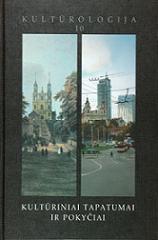Senamiesčio Įvaizdžiai Vilniaus Kultūros Paveldo Saugoje Xx A.: Nuo Kraštovaizdžio Iki Praeities Skeveldrų
Images Of Vilnius’ Old Town In The Protection Of Cultural Heritage In The 20th Century: From Landscape To Fragments Of The Past
Author(s): Jūratė MarkevičienėSubject(s): History
Published by: Lietuvos kultūros tyrimų
Keywords: Vilnius; old town; cultural heritage; Vilnius images; Lithuanian landscape;
Summary/Abstract: In this article, the word image is used to denote the mental image that individuals have of their city, which they consider being a “real” (essential) picture of their city and therefore seek to materialize it. From the perspective of heritage conservation, such an image is most frequently related to the ideology of world order, i.e. to the supposed “Golden Age” that existed in the past and the deterioration or distortion of this “perfect order” at later periods of history. Image building is based on the interpretation of an actual picture and the knowledge about it: the elements of the city’s form that do not correspond with the created image are ignored or denied (even eliminated) and those that accord with the way individuals perceive the city are highlighted, reconstructed or created. Throughout the 20th century, basically all generations of Vilnius’ inhabitants treated the Old Town as the most significant object of the city’s cultural heritage, but had different perceptions of it. At certain periods, lots of individual mental images existed, but a shoved one – or sometimes two, as a rule opposite – was formed as well. It is those public mental representations that were converted into images, i.e. formalized through the development, validation and implementation of various programmes and plans. The author claims that both the perception of the city and the image created depend on the type of perspective. Three types of perspective are differentiated: integrated, fragmented and defocused. The images of Vilnius’ Old Town are classified accordingly: the city as landscape, the city as a sum of monuments, and the city as scaffered shivers fragments of history. The images of the interwar period as well as some images from the latest decades are attributed by the author to the integrated ones (the concept of a national historical park of Vilnius’ Old Town; by law act on Vilnius’ Old Town, Part 1, 1997).
Journal: Kultūrologija
- Issue Year: 2003
- Issue No: 10
- Page Range: 233-293
- Page Count: 61
- Language: Lithuanian

